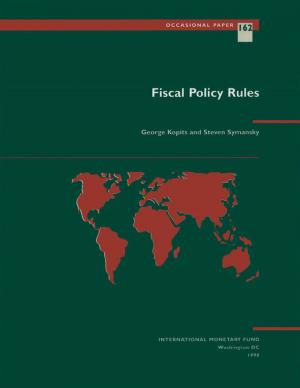Fiscal Monitor, April 2012
Business & Finance, Economics, Public Finance, Money & Monetary Policy, Finance & Investing, Taxation| Author: | International Monetary Fund. Fiscal Affairs Dept. | ISBN: | 9781475515565 |
| Publisher: | INTERNATIONAL MONETARY FUND | Publication: | April 17, 2012 |
| Imprint: | INTERNATIONAL MONETARY FUND | Language: | English |
| Author: | International Monetary Fund. Fiscal Affairs Dept. |
| ISBN: | 9781475515565 |
| Publisher: | INTERNATIONAL MONETARY FUND |
| Publication: | April 17, 2012 |
| Imprint: | INTERNATIONAL MONETARY FUND |
| Language: | English |
Overall, fiscal risks remain elevated, according to this issue, although there are signs that in some key respects they are less acute than six months ago. Past efforts with fiscal consolidation are beginning to bear fruit, particularly when buttressed by credible institutional commitments. Nevertheless, debt ratios in many advanced economies are at historical levels and rising, borrowing requirements remain very large, financial markets continue to be in a state of alert, and downside risks to the global economy predominate. In this uncertain environment, the challenge for fiscal policy is to find the right balance between exploiting short-term space to support the fragile recovery and rebuilding longer-term space by advancing fiscal consolidation. Against that background, this issue examines in more detail the concept of fiscal space, or the scope that policymakers have to calibrate the pace of fiscal adjustment without undermining fiscal sustainability. A number of conclusions emerge in regard to countries' ongoing vulnerability to unexpected shocks, the potential for substantial negative impacts of fiscal adjustment on activity, possible overstatements of short-term pressures on the public finances in some countries as general government gross debt ratios have risen, the implications of countries having flexibility in the short term but not the longer term, and the monitoring and enforcement challenges raised by second-generation fiscal rules.
Overall, fiscal risks remain elevated, according to this issue, although there are signs that in some key respects they are less acute than six months ago. Past efforts with fiscal consolidation are beginning to bear fruit, particularly when buttressed by credible institutional commitments. Nevertheless, debt ratios in many advanced economies are at historical levels and rising, borrowing requirements remain very large, financial markets continue to be in a state of alert, and downside risks to the global economy predominate. In this uncertain environment, the challenge for fiscal policy is to find the right balance between exploiting short-term space to support the fragile recovery and rebuilding longer-term space by advancing fiscal consolidation. Against that background, this issue examines in more detail the concept of fiscal space, or the scope that policymakers have to calibrate the pace of fiscal adjustment without undermining fiscal sustainability. A number of conclusions emerge in regard to countries' ongoing vulnerability to unexpected shocks, the potential for substantial negative impacts of fiscal adjustment on activity, possible overstatements of short-term pressures on the public finances in some countries as general government gross debt ratios have risen, the implications of countries having flexibility in the short term but not the longer term, and the monitoring and enforcement challenges raised by second-generation fiscal rules.















